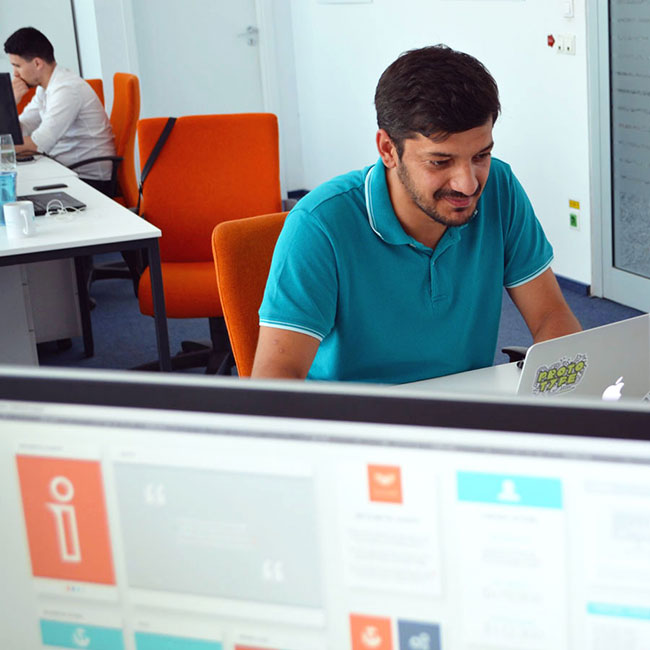In the beginning, websites were built using completely separate “mobile” versions targeted at the popular phones on the market. Today, technology is focused on responsive design – layout and content adjusts automatically to fit the device.
The frameworks that power the responsive web are underlying the transition to a mobile-first technology world. As the CTO of QUALITANCE, I want to share my thoughts for the future of technology.
Technology Trends
Motion UI – This is an emerging trend that we will see more and more in website applications. Frameworks I used or tested which implement strong visual feedback to the user using beautiful animations are: Foundation for Apps, Google Material Design or the Polymer Project.
Single language on web projects– We already see a shift in web application development to Node.js and other JavaScript server-side frameworks. Many large enterprises that run heavy load web applications like PayPal, LinkedIn, eBay, Yahoo or Microsoft already moved in this direction. Soon, teams will shift towards using a single language on web projects.
Web UI components – The way we build pages on the web these days is a little different. The market is moving faster and faster – to shorten and accelerate delivery & testing cycles we need to reuse elements and stop trying to reinvent the wheel. Modern frameworks – like Facebook’s ReactJS – use some fancy new techniques to quickly build user interfaces.
Web API – More companies will build web APIs, utilized by their web apps and their native mobile apps. Integrations between those APIs will allow us to build new products.
Single page applications – Considering the growth in popularity of the above mentioned technologies, I expect we’ll see more single page applications being produced and I feel we are prepared to do it.
Keeping up with Trends – Technologies and trends change in a flash.
That being said, I read a lot of articles online. Some of my favorites are Engadget, Wired, The Next Web, Product Hunt and Index. It helps me navigate through the industry, but I think that most important thing is getting your hands dirty. It’s much more helpful to actually work with the new technologies than read about them and try to figure it out that way. The rapid-prototyping method that we use complements this perfectly because we are able to test new approaches and quickly assess what is working and what isn’t.
From there, we integrate the most suitable technology into the QUALITANCE stack. Ultimately, my job is to make sure that the company’s technology strategy serves its business strategy. I asses all new trends through this lense.

My laptop, my Plantronics Backbeat Go 2 headphones, a full cup of coffee, a pen and a piece of paper.
Apps need great ideas and a team to make them happen
 Any successful app rests on the foundation of a solid idea designed with a specific purpose in mind. It’s important not to add unnecessary items that will dilute the main functionality. Simple is always better. Our team is the next piece of the puzzle. We have an incredible and passionate team of developers. It’s a very collaborative environment. We establish trust between one another and can be independent members of a team serving a common goal: changing how the world creates software.
Any successful app rests on the foundation of a solid idea designed with a specific purpose in mind. It’s important not to add unnecessary items that will dilute the main functionality. Simple is always better. Our team is the next piece of the puzzle. We have an incredible and passionate team of developers. It’s a very collaborative environment. We establish trust between one another and can be independent members of a team serving a common goal: changing how the world creates software.
Our strategy and frameworks are constantly evolving and that’s what makes working in technology so exciting. We are never bored and we can’t get too comfortable. I’m always excited to wake up and see how something has changed overnight. It’s the nature of the beast and it’s the best job ever.



No Comments